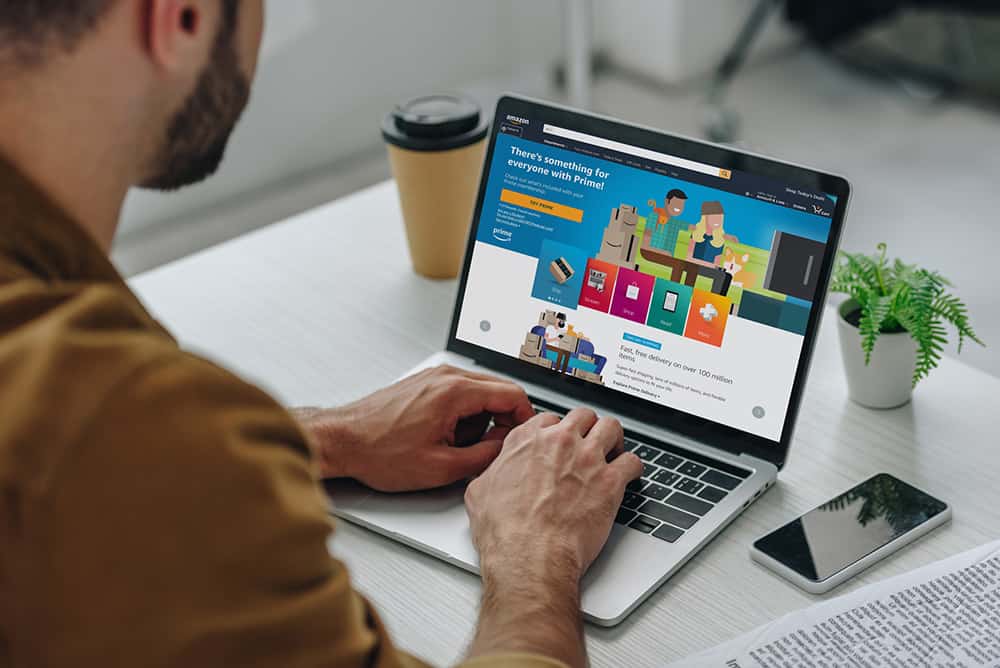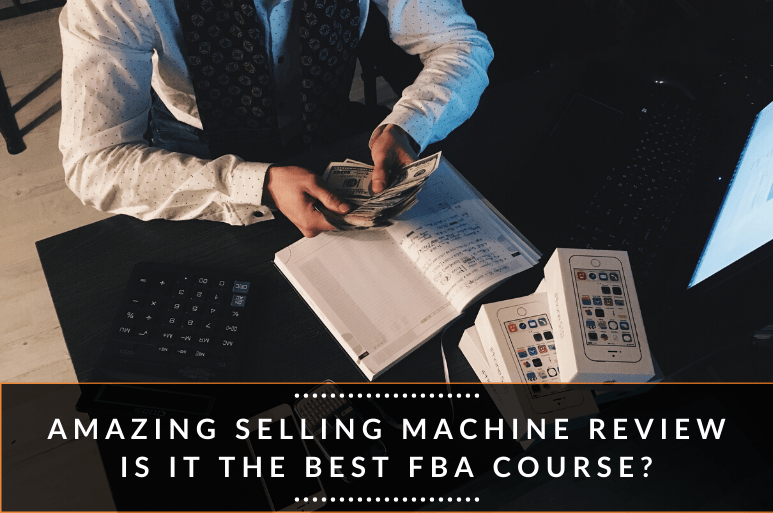Whether you’re a complete beginner or veteran entrepreneur, choosing between dropshipping and fulfillment by Amazon (FBA) can be tricky.
Which one is better for your business?
Wait, is it even viable in 2024?
… What if you want to change later?!
Don't panic.
Once you understand the strengths and ideal use cases of each business model, choosing the right business model is simple and straightforward.
For example, if I would start an ecommerce business today, I would leverage my affiliate marketing websites and established brand relations and go for Amazon FBA.
But back in 2012, when I tried ecommerce for the first time as an upcoming hotshot marketer, my best choice was dropshipping.
In this article, I'll show you why those choices make sense.
You'll get an insider look into exactly how both business models work, the major benefits of each and most importantly – which one is best suited for you and your type of business.
At the end, you’ll be able to make an informed decision between dropshipping vs FBA.
If you're already leaning towards one over the other, check out our posts on the best Amazon FBA courses OR the best dropshipping courses to get started.
Otherwise, read on.
Choose The Ecommerce Business Model That Works For You
Attempting to build your ecommerce store, or ANY business, on a model that doesn’t suit you personally will lead to procrastination, lousy results, and eventually… burnout.
Trust me. Burnout sucks.
So to figure out which of the business models is best for you, setting up a dropshipping store or going with FBA, we need to figure out who you are as a person and online business owner.
Generally, there’s two types of people.
People with fewer resources who enjoy experimentation and sales. They tend to be a good fit for dropshipping.
People who are more established in the retail space and enjoy stability. They tend to be more suitable for Amazon FBA.
But you’re not here for general. You’re here for specifics.
Let’s figure out exactly what kind of business owner is successful in each fulfillment method.
Will Dropshipping Work For You?
Dropshipping is an ecommerce business model with a low up front investment, low overhead, and potential for quick return on your money. Since you typically don’t pay for products until you’ve made a sale, it’s a great choice for entrepreneurs with smaller budgets (<$2000).
On the other hand, dropshipping is intensely competitive, the space is riddled with shady characters and scammers, and you’re responsible for advertising your products and taking care of customer service once sales are done. The profit margins also tend to be a lot lower than with Amazon FBA.
3 Examples of Successful Dropshipping Entrepreneurs
Here are three examples of business owners whose personality and goals are a great fit for the dropshipping model. Take a look if any of the following descriptions sound like you.
Bootstrapped Barney

Barney has only recently begun his online business journey. He has a budget of $1,000 so values minimal upfront investment and he’s hoping to see a quick return on investment. To achieve his goal, he’s willing to dedicate all his free time into becoming a successful ecommerce entrepreneur.
Barney lacks practical experience in marketing or sales, but he makes up for it with a desire to learn and a passion for hustling.
Marketer Maggie
Maggie is an experienced marketer wanting to try out her skills in ecommerce. While she’s comfortable in her skill to recognize an in-demand product in a low competition market, and sell products, she only wants to risk a maximum of $2,000 on her ecommerce venture.
Maggie wants to control every aspect of her customer’s journey, because she knows the real money is made with remarketing to long term customers.
Veteran Vincent
Vincent has been in the online retail industry for years and already runs a successful ecom or private labeling business already. He wants to try out new low competition markets without spending money on infrastructure or investing too much into inventory stock, fulfillment fees, external packaging, and supply chain.
Vincent is expecting to test several products, each with separate advertising campaigns, so he’s starting with a budget of $10,000.
The Personality Checklist – Find Out If Dropshipping Is Right for You
If you resonated with any of the archetypes above, take a look at this list. Do these qualities describe you?
You want to make small scale profit within 2-5 months
Your budget is small (less than $2,000)
You want to test out new markets quickly without fully committing
You’re inexperienced or want to validate your skillset
You enjoy creating marketing campaigns and doing sales or copy work
You want full control of your customer journey and business development
You don’t mind negotiating with dropshipping suppliers and dealing with customer orders and returns
If you’re nodding your head, choose the dropshipping business model.
Will Amazon FBA Work For Your Business?
Amazon FBA is a great business model for people who either have a sizeable budget to work with ($15,000+) and possible previous experience or connections in the retail space.
You handle sourcing the product, manage product quality, packaging, and then ship your stuff to Amazon.
Once your inventory is with Amazon, the FBA business model is pretty much turnkey. Amazon takes care of marketing, warehousing, packaging, shipping, and everything to do with customer service.
You simply customize your listing, add product photos, and Amazon starts selling products on your behalf.
There’s high potential for scaling on the logistics side of things, but on the business side, you control pretty nothing. You have little access to branding, analytics, or aftermarketing to customers. Your business is also at the mercy of Amazon’s possible policy changes, which do happen.
Keep in mind that doing this doesn't limit you to just Amazon's FBA program. You could also set up your own Shopify site on the store, work with retailers, and basically run your own business separately.
3 Examples of Successful FBA Entrepreneurs
Let’s look at some archetypes of people whose personality and business goals are a great fit for Amazon FBA. Do any of the following descriptions sound like you?
Retailing Rhonda
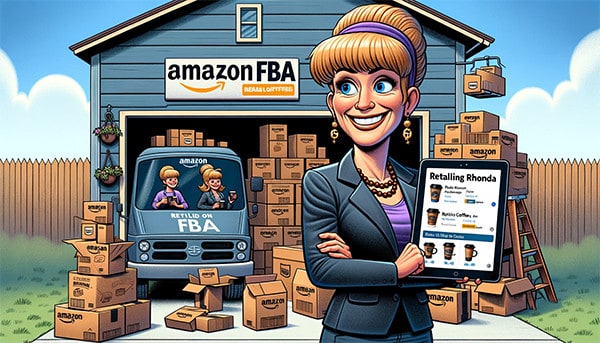
Rhonda and her family have been selling their locally produced coffee from their garage-turned warehouse. With evergrowing demand, they want someone else to take over the warehousing, packaging and the shipping process.
Rhonda knows her customers well and has decent understanding of online retail, but she has no desire to do any marketing. She just wants a convenient way to scale her business and get profitable sales.
Warehouse Wally
Wally’s warehouse is full of antiques, which he sells slowly, through Ebay and Craigslist. Wally hates customer service, doesn’t really want to deal with people directly, and basically.. doesn't really know how to sell online.
He would much rather focus on finding great suppliers with amazing inventory, and keep his warehouse stocked with valuable items he knows people want to buy.
Enterprise Eric
Eric is an experienced ecommerce entrepreneur, running several successful online retail shops through a complicated web of international logistics services. As a family man, he wants to spend more time away from the business.
He wants to simplify and streamline his business systems as much as possible.
The Business Owner Checklist – Find Out If Amazon FBA Is Right for You
If you resonated with any of the archetypes above, take a look at this list. Do these qualities describe you?
You want to build a scalable business, with larger margin profits within 1-3 years
You’ve already established an audience or successful retail business
You have some connections with suppliers or your own product line (or are willing to do this)
You have a decent budget to work with for your initial investment (more than $15,000)
You want reliability and consistency in your business
You’re not so interested in hustling or marketing efforts
You don’t mind giving up part of your brand identity for now, if it means not having to deal with logistics and customer service
If this is you, congrats. Amazon FBA is the correct choice for your business.
3 Reasons I Recommend Dropshipping to New Ecommerce Entrepreneurs
Ultimately your decision should be your own, but I think most new entrepreneurs should go with dropshipping. Here’s why.
It’s low risk. You’re a new player in the ecommerce field. You need to make mistakes and find your own groove, and it’s best to do it with minimal financial risk and initial investment.
It’s low commitment. If something isn’t working, you have to be able to course correct rapidly, instead of getting stuck with tons of inventory or lengthy logistics deals.
It’s a crash course in ecommerce. As a newcomer to the field, you have a ton of learning ahead, and dropshipping will put you in situations where you’re forced to learn quickly.
I hope you’ve made your decision or at least come close to it. Now let’s see how the business models work in practice and how you can get started.
Quick Guide to Dropshipping – The Bootstrapper’s Business Model
“We decided to give dropshipping a try and quickly saw the potential. Our profit margins were smaller than when we were importing, but we were able to sell thousands of more products while serving many more buyers. It also led to our workload going down and overhead costs of a warehouse literally disappearing.”
-Anton Kraly, Founder of Dropship Lifestyle
Dropshipping is a low-risk, low initial investment method, which has made it a go-to strategy for bootstrapped entrepreneurs…
… and internet swindlers, who promote it as a way to get rich quick.
Don’t let them fool you. The dropshipping business model, as any online business, is far from easy money.
How Does Dropshipping Work?
To make dropshipping work successfully, you have to find a reliable supplier and choose a product niche with enough demand and profit potential. Then you create your own dropshipping store and find a way to attract potential buyers to it.
For example, let’s say you want to sell GPS navigators. You would find a supplier in China and create an online shop advertising that product. Once a customer makes a purchase on your shop, you would send their order to the supplier, which then sends the GPS device directly to the customer.
Here’s how dropshipping works in practice:
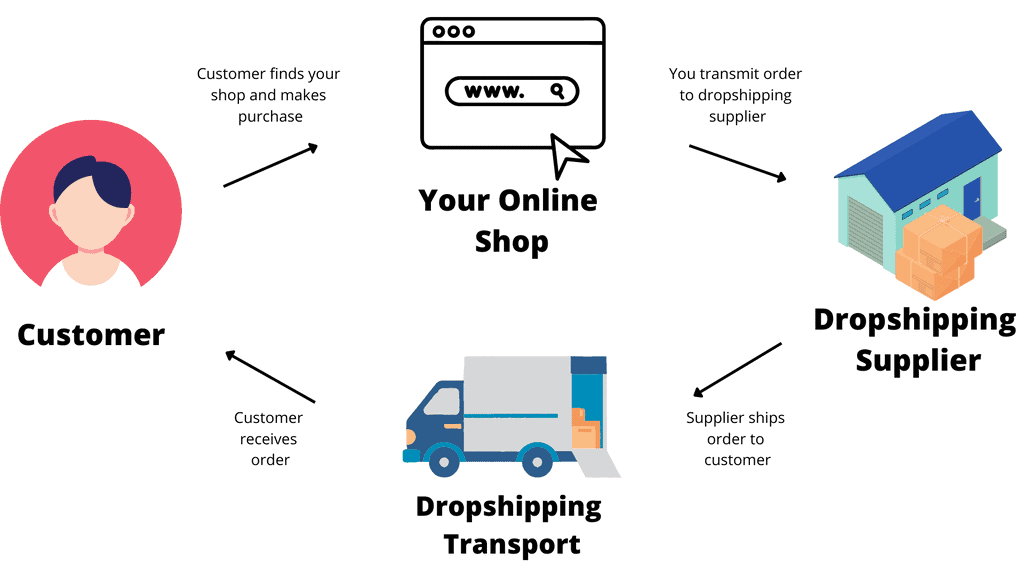
A customer finds an interesting product through a Google search, a Google ad, an Instagram ad, a Facebook ad etc. which leads them to your ecommerce store.
They make a purchase on your online store at retail price, which you then fulfill at wholesale price, skimming the profit.
The dropship supplier handles warehousing, packing and shipping of your order.
The dropshipping supplier ships the product to your customer.
How to Start a Dropshipping Business in 5 Steps
Starting a dropshipping business is pretty straightforward on paper.
1. Find a profitable product niche

Your primary task is to find a product niche where you can squeeze out the biggest profit margin.
As competition is fierce in the major niches, your best bet is to aim for a smaller market. For example, instead of women’s clothing, you would go for silk pajamas for women. Or instead of furniture, you would go for decorative vases.
2. Get to know your audience
Who’s your buyer? Where do they hang out? What do they need your product for? Find out everything you can about your potential buyers from Facebook groups, Instagram comments, Tiktok videos etc. This way you’ll understand which sales channels to focus on, how to create your advertisements, how to market your brand, etc.
3. Find a suitable dropshipping supplier
To find a supplier, start by searching words like “your niche + wholesale, wholesaler, distributor”. Shopify also has a list of reputable dropshipping suppliers with good reputation that you can start with. We've also got a list of dropshipping tools that can help you with this, Spocket is one of my favorites.
Warning: do not search for suppliers on Google with “niche + dropshipping supplier.” This is a good way to get scammed by fake or untrustworthy suppliers.
4. Build your dropshipping store
An online storefront is the most important part of your dropshipping business. This is where your customer decides whether or not they will trust you with their hard earned money. You can build an ecommerce shop on WordPress with Woocommerce, or set up your own Shopify store.
5. Get customers into your store
Now it’s time to get visitors to your shop. Many dropshippers advertise their products on Instagram or Facebook. It’s highly effective, but can take some trial and error to get right.
Expect advertising budgets of $300-500 before finding a working combination for your customer base. A free, albeit slower, way to get visitors is content marketing using a blog, a Youtube channel, Tiktok etc.
If you want a complete step-by-step course on how to go from beginner to hero in dropshipping, we recommend the Dropship Lifestyle course by Anton Kraly.
This is how I personally got started with ecommerce and I know dozens of other people who've seen success following his model.
Cost of Starting a Dropshipping Business
Starting a dropshipping business doesn’t take much money, but it’s not free either. Using these estimates you can get a ballpark figure of the costs. For a more thorough rundown, check out Oberlo’s article on dropshipping costs.
Here's a basic overview of the cost of starting a dropshipping business that is boostrapped:
| Dropshipping store / website | Shopify $30/month |
| Store additions | $50-100/month |
| Advertising | Facebook ads $250+/month |
| Dropshipping search tool | $30/month |
| Product validation | $50-200 |
Prepare to spend at least 3 months testing things and figuring stuff out before making a sale. Advertising especially can take a few tries to get right.
In total, you’re looking at a budget of $1,000-2,000 to start but it's wise to have a buffer as well for unexpected costs.
An Insider Look into the Dropshipping Model
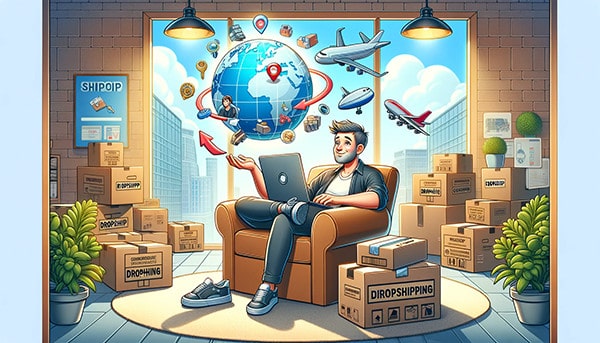
Finding your way to a supplier with a quality product might take some time and patience. But once you do, the fulfillment method itself is low risk, has low overhead, and can offer a quick return on investment.
Since you typically don’t have to invest anything before you make a sale, you can set up all your systems before risking a significant amount of money. This also makes testing different products and markets simple and quick, which is helpful since dropshipping can be intensely competitive.
As a dropshipper, you control all aspects of your online business. You own your customer’s full lifetime journey, and you’re responsible for customer service and returns (and customer data!!).
Creating advertising campaigns that send visitors to your online store, building a brand and developing trust with your customers – it’s all on you.
Here are the pros and cons of dropshipping:
| Pros | Cons |
| Low overhead | Small profit margins |
| Low upfront investment | Risk of inadequate product information from suppliers |
| No inventory costs before sale | Customer service and returns |
| No need for packaging, warehousing or shipping | Difficult to control shipping times and package design |
| Ability to build your own brand | Difficult to maintain consistent quality |
| Customizability and control of business | No control over stock shortages |
| Test products and markets at low risk | Need to use paid advertising or SEO content to reach your audience |
| Build a customer base for retargeting | Your shop has zero credibility at the start |
Quick Guide to Amazon FBA – The Turnkey Ecommerce Business
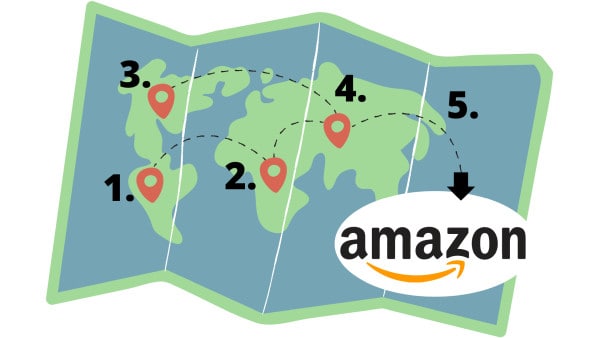
“The biggest pro is that once you are ranked in Amazon and things are selling, FBA is pretty much hands-off. You can run external ads to your listing, send off press releases, have giveaway promotions, and do all the things people do to get higher rankings in Amazon. Or you can choose to not do any of that and just sit back and collect your money.”
-Mark Brenwall, founder of WOD Nation
Fulfillment by Amazon has become a turnkey method for online retailers to scale their businesses to the next level. Let’s see how it works.
How Does Fulfillment by Amazon Work?
To use Amazon FBA, you send your products to Amazon’s warehouse and then create listings for each of your products on the Amazon marketplace. Once that’s done, Amazon takes care of the rest. Amazon buyers will find and purchase through your listings and Amazon will fulfill the orders.
For example, say you’re selling handmade crafts. You would create listings on the Amazon website, ship your products to your local Amazon warehouse and they would handle the rest. Simple once you get it going. The real trick is to find the products and get them shipped to Amazon.
Here’s how Amazon FBA in practice:
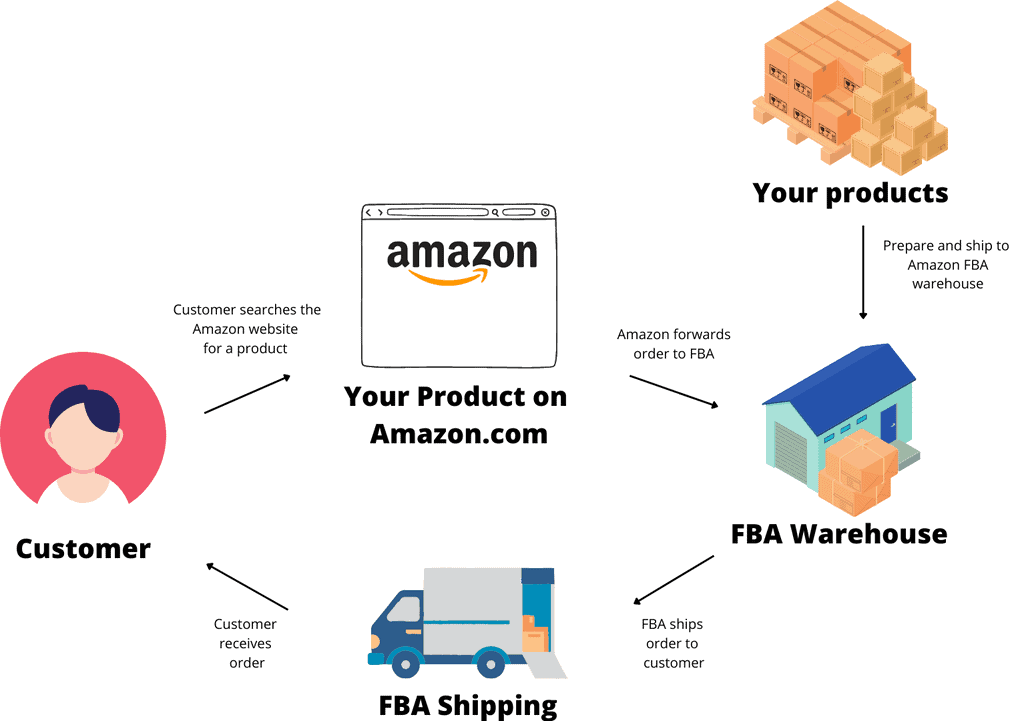
You send your products to the Amazon FBA warehouse.
Customer browses their local Amazon marketplace for a specific product.
Customer lands on your product listing and makes a purchase.
Amazon takes care of payment and forwards order to Amazon FBA.
The FBA warehouse ships product to customer.
Amazon sellers collect their profit 🙂
How to Start an Amazon FBA Business in 6 Steps
1. Find Your Niche
Competition on Amazon is fierce, and you need to hit a market with enough demand to make your efforts worthwhile. I recommend starting with a tool like Jungle Scout to find your market, but a thorough analysis of your competitors and trending lists on Amazon will get you a long way.
Aim for a sub niche or something unique. Instead of wearable electronics, aim for waterproof wearables. Or instead of jewelry, aim for locally handcrafted jewelry.
2. Create a Clear Business Plan
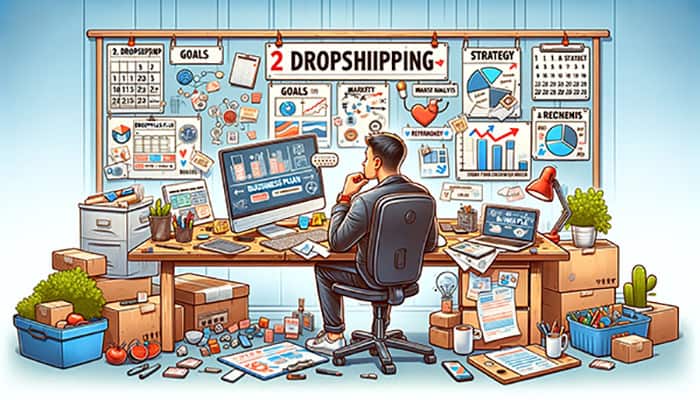
To stay on top of the amount of moving parts in an ecommerce-operation, a well made business plan is pretty important. It can serve as a roadmap for growth from where your ecommerce business is now, to where you expect to be in the next five years. It explains your business goals, your strategy for reaching them, an analysis of your target market, and revenue expectations. It doesn’t need to be fancy or special as it's mostly for your own purposes. You can start with this FBA business plan template from Profitable Venture.
3. Set up Your Amazon FBA Account
There’s two types of FBA accounts, Individual and Professional. One charges per item sold, one charges monthly. I recommend starting with the Individual account first so you can test your market and logistics chain. Take a look at FBA account types here, and sign up!
4. Source Items to Sell
Unless you have established manufacturer connections, you need a wholesale supplier for your product. DHgate.com, Alibaba, or other digital wholesalers can be a good starting point. You can also visit (virtual) trade shows and contact the vendors there. Here’s how you can use Jungle Scout to spy on your competitors and find their suppliers.
5. Package & Ship Your Products
You have your products – now they must be prepared before sending them to the Amazon FBA warehouse. If your supplier can not do this, you must either do it yourself or hire a third party logistics (3PL) service, like 3PLGuys, to act as an intermediary between your supplier and Amazon.
6. Optimize Your Listings
Amazon does an amazing job at testing and finetuning their website to maximize conversions. You don’t need to worry about traffic or having to sell products, but you do need to worry about your product listings.
Every listing must as clear and concise as possible, with excellent product images, SEO keywords, and accurate product information. If your customer wants this product, you must make the purchase decision as easy as possible for them. Here’s a guide on creating a unique Amazon listing. You can also hire a service to optimize your listings.
I wish I would’ve focused on this sooner. As soon as I hired a good listings provider, my conversions doubled within a matter of weeks, and I no longer needed to spend hours writing copy for each listing.
If you want a complete step-by-step course on how to go from beginner to hero in Amazon FBA, I recommend the Amazing Selling Machine by Jason Katzenback and Matt Clark.
Again, this is the course that got me started on my own FBA journey and is also rated the best Amazon FBA course on the market.
Cost of Starting an Amazon FBA Business
Let’s look at how much it costs to start on Amazon FBA. Note that this is just an overview of the most common costs so you can get a rough idea of the budget you will need.
Here are the basic costs of starting an Amazon FBA business:
| Seller account and storage fees | $40-80/month |
| Product research tool | $50/month |
| Inventory fees | $200 |
| Inventory | $3000-5000 |
| GS1 Company Prefix Barcode | $250 (10 products) |
| Amazon PPC | $300-1000 |
| Promotional giveaways | $200 |
| Trademark | $350 |
In an ideal situation, Amazon FBA startup cost ranges from $5,500 to $13,500, with monthly costs ranging from $400 to $1,500.
Keep in mind that your first attempt at Amazon might not work out, and you might need another batch of inventory for a completely different product!
An Insider Look into the FBA Model
Once you find a good market on Amazon, it’s a reliable and consistent way to scale. Your customers get access to same day fulfillment services, Amazon Prime-eligibility, and all the benefits of Amazon’s conversion optimized online store. Amazon also takes care of customer service and item returns.
Having run “traditional ecommerce sites”, I can tell you that order fulfillment is not a game you want to play without experience. There's a lot that can go wrong and your customer base isn't going to appreciate your trial and error.
While your own brand is near non-existent on Amazon, you benefit from the Amazon-brand’s credibility and recognition. Meaning when people find your products, they will feel secure in making a purchase.
Unlike with dropshipping, you don’t need to build an audience or following. You also don’t need massive marketing to warm up buyers: most of your customers will come from Amazon’s customer base of 200 million monthly visitors who are on the site to buy, not browse.
As for negatives, you don’t own your customer relationships and you don’t have access to data or analytics of sales, meaning there’s no opportunity for aftermarket sales or keyword optimization. Amazon’s easy return policy can also increase the amount of returns.
You need to prepare all shipments before sending them to the Amazon warehouse, which may limit your options when choosing a supplier or reducing your workload.
You’re also surrendering your business to Amazon’s everchanging rules and fees.
Here are all the pros and cons of starting an Amazon FBA business:
| Pros | Cons |
| Amazon customer base | No brand development |
| Many ways to increase profit margins | Aftermarketing to customers is difficult |
| Low cost, fast, reliable shipping | High initial investment |
| Consistent quality shipping and packaging | Product preparation before sending to FBA |
| Amazon Prime, unique promotion opportunities (Buy Box) | Unexpected Amazon limitations and fees, long-term storage fees |
| Amazon Customer service | Difficult to test product/audience match |
| No hassle returns | For larger volumes, you need your own warehouse or 3PL |
| Hands-off once your products are at Amazon’s warehouse | |
Wrapping Up
Well, that was a doozy. That's a ton of information, but you now have everything you need to navigate the dropshipping vs FBA choice.
Which one did you decide to go for?
When I started, I spent hundreds of hours and literally tens of thousands of dollars trying to figure these approaches out on my own.
It sucked. And I lost a lot of money.
In 2024 things are a lot easier because you've got experts like Anton Kraly and Matt Clark who've been there, done it, and now have been teaching tens of thousands students to do the same.
You can get an FBA course like Matt's Amazing Selling machine for as little as $83/mo. Fun fact – I paid over $5,000 for this course years ago.
If you'd prefer to go the dropshipping route – get Anton's Dropship Lifestyle. The community there is amazing and they even host events.
Best of luck and don't hesitate to reach out if you ever need help along the way.
FAQ
Can You Combine Dropshipping With FBA?
We’ve addressed the benefits of combining dropshipping with a 3PL. But what about combining dropshipping with Amazon FBA?
You obviously CAN do it, but here’s a couple of considerations why you probably shouldn’t, and instead choose a different 3PL for your dropshipping business.
You would have to repackage the products for FBA, which kind of defeats the hands-off approach of dropshipping in the first place. You could have another 3PL repackage your orders, but then – why use Amazon at all? Just ship your orders directly.
You might face an audience/product mismatch. Dropshipping products generally appeal to people looking for novelty or special deals outside the major retailers, while Amazon buyers are looking for lowest price. You could switch products, but then – why dropship at all? Just use Amazon FBA.
What About Amazon Merchant Fulfilled Network? (MFN, FBM)
Amazon Merchant Fulfilled Network, or Fulfillment By Merchant, is another version of Amazon’s fulfillment service, where you the merchant take care of order fulfillment. This is an ideal option for people who have their own logistics capacity or 3PL (third party logistics companies), but still want to use Amazon’s website to reach an audience.


